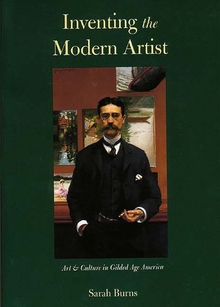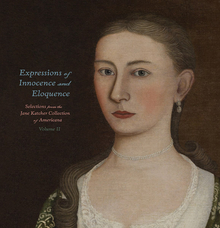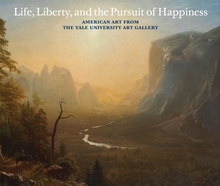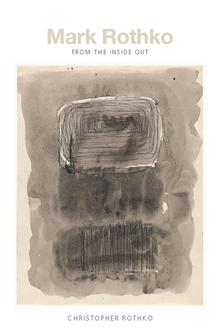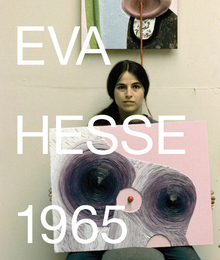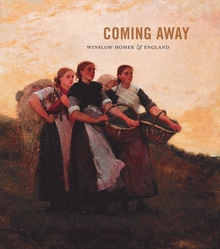Inventing the Modern Artist
WARNING
You are viewing an older version of the Yalebooks website. Please visit out new website with more updated information and a better user experience: https://www.yalebooks.com
Art and Culture in Gilded Age America
Sarah Burns

Read this book online via the A&AePortal, our art and architectural history eBook platform. To learn more about how to access this book, please contact us.
Out of Print
With the vigorous growth of the magazine industry, says Burns, information about art and artists was diffused to a larger audience than ever before. Burns examines how stories and features in magazines, newspapers, and books forged reputations, established canons, and made the artist an important figure in American culture. She demonstrates how artists learned to "package" themselves in the early advertising age to create a desire not only for their products but also for the trappings of their artistic life. Next Burns examines how European models of the overrefined aesthete were reworked into more wholesome American versions, while painting took on an increasingly therapeutic role. She investigates gender dilemmas of the period, revealing how women artists were marginalized as professionals, and how the close fit between contemporary business values and the image of Winslow Homer explains why he was so often celebrated as the ultra-masculine, all-American painter. Burns also analyzes a variety of other artist images, ranging from theatrical Bohemians to clean-cut, civic-minded young professionals and down-to-earth commercial draftsmen. Illustrated with portraits, photographs, and cartoons of artists as well as a rich selection of paintings, this book demonstrates how patterns of artistic identity emerging in the late nineteenth century set the stage for those that have dominated the history of twentieth-century art and image making in America.
"This well-argued, well-written partisan scholarly volume contributes vast new historical detail to American studies of the late 19th century . . . . [Burns] examines the patriarchal treatment of women and artists as culture producers and transmitters. . . . This rich resource is highly recommended for academic collections."—Library Journal
"Her book is deeply researched, thoughtful, and wonderfully well written. . . . The argument, a cluster of essays really, is the cultural construction of the artist, the relationship among image making, the marketplace, gender, politics, and the formation of American artistic identity, a formidable task that is brilliantly accomplished."—Choice
"When Burns speaks of art objects . . . her observations are startlingly original and always wise. . . . In this book Burns has constructed a sturdy bridge between contemporary historical writing and the stuff of art history."—Karal Ann Marling, Indiana Magazine of History
"In 327 pages of elegantly expository prose, Burns does a masterful job of elucidating the array of tensions that characterized the cultural scene at the turn of the last century."—David Hoppe, New Art Examiner
"Subtly argued, broadly researched, and richly illustrated. Sara Burns's Inventing the Modern Artist greatly informs the history of the Gilded Age and, if I am not mistaken, will generously inform its historians."—Robert Muccigrosso, Journal of American History
"This wonderful book offers a detailed look at how late Victorian culture produced the thoroughly modern artist of the twentieth century."—Publishers Weekly
"Inventing the Modern Artist engages in metaphorical construction as a way to understand change and foreignness."—Patricia M. Burnham and Lucretia Hoover Giese, Journal of Interdisciplinary History
"An outstanding example of art historical scholarship that reached beyond the visual arts to explore the broader cultural context of late Nineteen Century America."—Antiques and the Arts Weekly
"Students love this book. Now that it is available in paperback, I will order it for [my] course."—Angela Miller, Washington University
"Very useful and well done book! I will adopt for students." —Gray Sweeny, Arizona State University
"Armed with recent revelations from social, gender, cultural, and literary studies, Burns applies her probing mind and observant eye to the complex question of how the United States constructed the image and profession of the 'artist' during a period of national incorporation. . . . The end result is a study as abundant, textured, an engaging as the Gilded Age itself. . . . With brilliant insights, clever quotations, carefully read textual and visual sources, and witty phrasing, the author takes her readers through a multifaceted study of the painting and cultural politics of Gilded Age America. It is an enjoyable, profound, and magisterial book."—Janice Simon, Burlington Magazine
"A wonderful book, the finest we are likely to have for many years on Gilded Age painting. It combines a sophisticated account of late-nineteenth-century American history with an equally astute knowledge of painters, markets, and audiences of the period."—Bryan Wolf
Publication Date: March 11, 1999
130 b/w illus.

